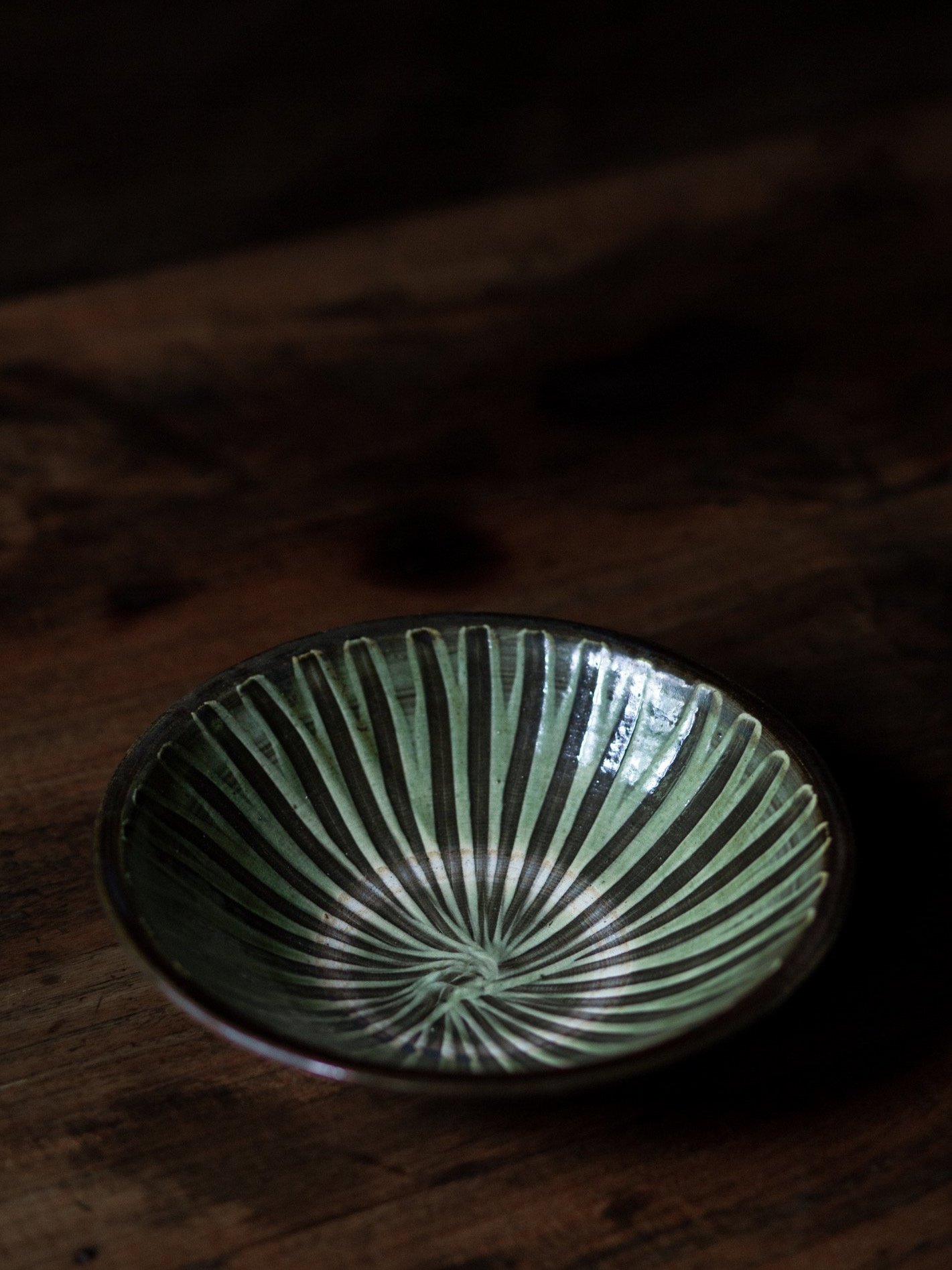 Image 1 of 3
Image 1 of 3

 Image 2 of 3
Image 2 of 3

 Image 3 of 3
Image 3 of 3




Mingei
This plate was produced on the Japanese island of Kyushu according to ancient techniques dating back to the 15th century when Korean potters brought new techniques such as kiln designs and ash-glazing.
This plate was handmade in the village of Onta where a few potters work together as a community creating objects both for daily use and artistic purposes. Onta pottery has been designated an Intangible Cultural Property of Japan meaning that potters continue to work according to traditional methods and perpetuate important old knowledge and savoir-faire.
The design of this plate is reminiscent of the Mingei movement created by Soetsu Yanagi in the 1920s in Japan. The Japanese philosopher discovered beauty in everyday ordinary and utilitarian objects created by unknown craftsmen.
This versatile plate can be used daily in our kitchens or as a beautiful decorative object in the house.
This plate was produced on the Japanese island of Kyushu according to ancient techniques dating back to the 15th century when Korean potters brought new techniques such as kiln designs and ash-glazing.
This plate was handmade in the village of Onta where a few potters work together as a community creating objects both for daily use and artistic purposes. Onta pottery has been designated an Intangible Cultural Property of Japan meaning that potters continue to work according to traditional methods and perpetuate important old knowledge and savoir-faire.
The design of this plate is reminiscent of the Mingei movement created by Soetsu Yanagi in the 1920s in Japan. The Japanese philosopher discovered beauty in everyday ordinary and utilitarian objects created by unknown craftsmen.
This versatile plate can be used daily in our kitchens or as a beautiful decorative object in the house.
This plate was produced on the Japanese island of Kyushu according to ancient techniques dating back to the 15th century when Korean potters brought new techniques such as kiln designs and ash-glazing.
This plate was handmade in the village of Onta where a few potters work together as a community creating objects both for daily use and artistic purposes. Onta pottery has been designated an Intangible Cultural Property of Japan meaning that potters continue to work according to traditional methods and perpetuate important old knowledge and savoir-faire.
The design of this plate is reminiscent of the Mingei movement created by Soetsu Yanagi in the 1920s in Japan. The Japanese philosopher discovered beauty in everyday ordinary and utilitarian objects created by unknown craftsmen.
This versatile plate can be used daily in our kitchens or as a beautiful decorative object in the house.
Origin: Japan
Material: Natural Clay
Condition: New
Dimension: D 21 x H 6 cm
Care: Rinse gently with water. Avoid aggressive soap to preserve the quality of the ceramic.
